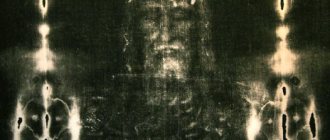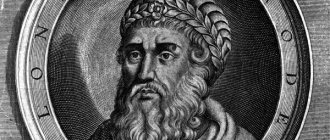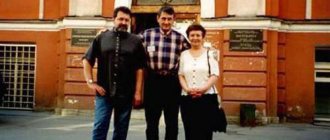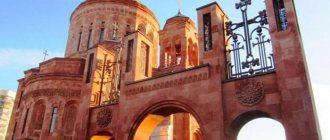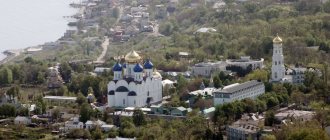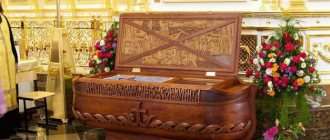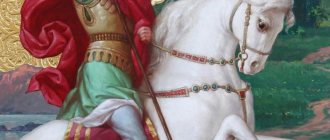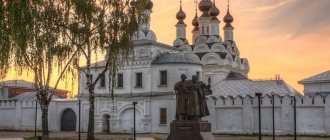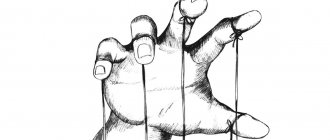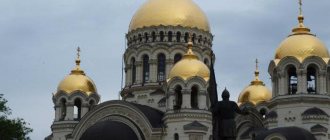This term has other meanings, see Syria (meanings).
| Syrian Arab Republic | |
| Arab. الجمهورية العربية السورية | |
| Flag | Coat of arms |
Syria
(Arabic: سوريا), full name:
Syrian Arab Republic
(Arabic: الجمهورية العربية السورية,
al-Jumhuriyya al-Arabiya al-Suri ́yya
) is a state in the Middle East, bordering Lebanon and Israel in the southwest, Jordan in the in the south, with Iraq in the east and Turkey in the north. It is washed by the Mediterranean Sea in the west.
The modern statehood of Syria dates back a little over 70 years, but civilization arose here back in the 4th millennium BC. e. The capital is Damascus, one of the oldest continuously inhabited cities in the world. In addition, Damascus is also the most ancient of all modern capitals in the world[7].
Syria's population is 18.5 million (2015). Almost 93% of Syrians are Muslims; 6% of the country’s residents adhere to different branches of Christianity. The official language is Arabic.
From 1963 to the present, the republic has been under the rule of the Syrian Baath Party and its allies. Since 2011, there has been a civil war in Syria between supporters of the official government (Baath and Bashar al-Assad), the armed opposition, the Kurds, and since 2014, ISIS and a large number of other Islamist groups.
Content
- 1 Etymology
- 2 History 2.1 Ancient Syria
- 2.2 Islamic rule
- 2.3 French Mandate
- 2.4 Recent history 2.4.1 United Arab Republic
- 2.4.2 Syrian Arab Republic
- 2.4.3 Syrian Civil War (since 2011)
- 3.1 Government
- 4.1 Relief
- 5.1 Golan Heights
- 6.1 Foreign trade
- 7.1 Highways
- 8.1 Largest cities
- 9.1 Education
A country without religion
There is no official religion in Syria - that's a fact. However, one should not assume that the majority of residents of this country are inveterate atheists. In contrast, the vast majority of Syrians are Muslim. The principles of daily life and holiday customs are also regulated by Islamic traditions.
In addition, the Syrian Constitution notes that the president of the state must be a Muslim. In general, adherents of other religious faiths are treated with loyalty here, although respect for local beliefs is required.
Etymology
Title " Syria"
" comes from the ancient Greek name for the colonies of Assyria, formed from the Semitic word "Sirion". The area on the eastern coast of the Mediterranean Sea south of Cilicia, between Egypt and Mesopotamia, including the Armenian regions of Commagene, Sophene and the Assyrian region of Adiabene, is described by Pliny the Elder as “former Assyria.” By the time Pliny completed his major work, Natural History, the region had been divided by the Roman Empire into several provinces: Judea (later Palestine, modern Israel, Palestine and part of Jordan), Phenicia (modern Lebanon), Mesopotamia and Kelesyria. (i.e. "Hollow Syria").
Cultural mixture
Since the formation of Syrian culture was influenced by a variety of peoples, it seems extremely rich and diverse. It is noteworthy that the official language in the country is Arabic, but many of its residents speak Syriac.
It is a dialect of Arabic that is reminiscent of Jordanian, Palestinian or Lebanese. Also, part of the population prefers to use Armenian or Kurdish dialects in everyday life. Foreigners can speak English or French - quite a few Syrians know them.
However, such a motley mixture is manifested not only in the linguistic aspect. A clear confirmation of cultural borrowing is the cuisine of Syria. Surprisingly, Syrians prefer to cook Greek or Asian culinary products rather than traditional Arabic dishes. A significant part of local dishes originates from Turkish or French cuisine (examples of this are kebab, stuffed zucchini).
Arch of the Bab al-Sharqi gate in Damascus
Story
Main article: History of Syria
| History of Syria | |
| Tell Khaznah I | |
| Ugarit | |
| Marie | |
| Ebla | |
| Emar | |
| Qatna | |
| Shubat-Ellil | |
| Yamhad | |
| Mitanni | |
| Marie | |
| Hittite kingdom | |
| Syro-Hittite kingdoms | |
| Aramaic Damascus | |
| Neo-Assyrian kingdom | |
| Neo-Babylonian kingdom | |
| Achaemenid Power | |
| Seleucid State | |
| Apamea | |
| Palmyra | |
| Roman Syria | |
| Palmyra Kingdom | |
| Byzantine Empire (Syria Prima, Syria Secunda, Theodorias | |
| Arab conquest | |
| Umayyad Caliphate | |
| Principality of Antioch | |
| Edessa County | |
| Mamluk Sultanate | |
| Seljuk Empire | |
| Ottoman Empire (Eyalet Damascus, Eyalet Aleppo, Vilayet Syria, Vilayet Aleppo, Vilayet Beirut) | |
| Arab revolt | |
| Arab Kingdom of Syria | |
| French Mandate in Syria and Lebanon | |
| Syrian revolution | |
| Arab-Israeli conflict | |
| United Arab Republic | |
| Syrian Arab Republic | |
| Islamist uprising in Syria | |
| Civil war in Syria |
Ancient Syria
The history of Syrian civilization dates back at least to the 4th millennium BC. e.
Eblaite language is the oldest known Semitic language. The Ebla Library, discovered in 1975, contains more than 17 thousand clay tablets dedicated to crafts, agriculture and art. Among the leading crafts of Ebla are the processing of wood, ivory, and pearls. Other famous cities of the era include Mari, Ugarit and Dura-Europos.
Roman theater in Bosra
In the 23rd century BC. e. Ebla was conquered by Akkad, and the capital was completely destroyed. Then the Canaanite tribes invaded the territory of Syria, forming many small states[8]. During the period between the invasion of the Canaanite tribes and the conquest of Syria in 64 BC. e. By the Roman Empire, its territory was successively ruled by the Hyksos, Hittites, Egyptians, Arameans, Assyrians, Babylonians, Persians, ancient Macedonians, the Hellenistic power of the Seleucids, and the Great Armenia of Tigran the Great.
From the 16th century BC. e. in the south of Syria there is the city of Damascus, originally subordinate to the Egyptian pharaohs[8].
Syria occupies an important place in the history of Christianity - according to the Bible, Paul accepted the Christian faith on the road to Damascus, and then lived in Antioch, where the disciples of Christ first began to be called Christians (See Acts of the Apostles).
Islamic rule
Fortress of Aleppo
Islam gained a foothold in Syria in 661, when Damascus became the capital of the Arab Caliphate under the Umayyads. At this time, the Caliphate was already a powerful state, stretching from the Iberian Peninsula to Central Asia. Damascus became the cultural and economic center of the entire Arab world, already in the 8th century being one of the largest cities in the world. In 750, the Umayyads were overthrown by the Abbasid dynasty, after which the capital of the Caliphate moved to Baghdad.
In the 12th century, the crusader states were formed on the territory of Syria, which lasted less than a hundred years. Since the 13th century, Damascus became the provincial center of the Mamluk Empire. In 1400, Syria was attacked by the Timurids. Tamerlane defeated the Mamluk detachments, destroyed Damascus and took all its wealth to Samarkand. From 1517, Syria became part of the Ottoman Empire for 4 centuries.
On the eve of the First World War, the territory of modern Syria was part of three vilayets of the Ottoman Empire - Beirut, Aleppo and Damascus (Syria). The eastern, sparsely populated and mostly desert part of modern Syria was the western part of the independent sanjak of Zor, centered at Deir ez-Zor. The territory of the Zor sanjak approximately coincides with the territory controlled by the Islamic State in 2014-2017[9].
French Mandate
Main article: French Mandate in Syria and Lebanon
Soon after the defeat in the First World War, the Ottoman Empire collapsed, and many of its territories were occupied. In 1920, the Syrian Arab Kingdom was founded with its center in Damascus. Faisal from the Hashemite dynasty, who later became the king of Iraq, was declared king. But Syria's independence did not last long. Within a few months, the French army occupied Syria, defeating Syrian troops on July 23 at the Battle of Maysalun Pass.
In 1922, the League of Nations decided to legalize the occupation of Ottoman lands by Great Britain and France. In 1917, Great Britain occupied part of the Ottoman Empire - the region of Palestine. In 1922, the regime of direct occupation was replaced by administrative control - a Mandate from the League of Nations. Subsequently, Palestine was divided. The lands east of the Jordan River were separated from it, where Transjordan was created under the protectorate of Great Britain.
Region in 1920
France, in turn, received a League of Nations Mandate for the territory of Syria in 1922.[10] In 1926, the mandate territory was divided into Lebanon and Syria.
In 1926, Lebanon introduced a national constitution that confirmed the French mandate and provided for an elected president and a unicameral parliament[8].
In 1936, a treaty was signed between Syria and France providing for Syrian independence, but in 1939 France refused to ratify it. In 1940, France itself was occupied by German troops, and Syria came under the control of the Vichy Regime (Governor General Henri Denz). Nazi Germany, having provoked the rebellion of Prime Minister Gailani in British Iraq, sent units of its air force to Syria.
In June - July 1941, with the support of British troops, Free French units led by generals Charles de Gaulle and Georges Catroux occupied Syria during a bloody conflict with Denz's troops. General de Gaulle in his memoirs directly indicated that the events in Iraq, Syria and Lebanon were directly related to German plans to invade Greece (including the island of Crete), Yugoslavia and the USSR, since they had the task of diverting the armed forces of the Allies to secondary ones theaters of war.
On September 27, 1941, France granted independence to Syria, leaving its troops on its territory until the end of World War II. On January 26, 1945, Syria declared war on Germany and Japan. In April 1946, French troops were evacuated from Syria under pressure from the USSR and opposition from the United States[11]. After which the Syrian government for decades moved towards the predominance of foreign contacts with the USSR.
Recent history
The president of independent Syria was Shukri al-Quatli, who fought for the country's independence under the Ottoman Empire. In 1947, a parliament began to operate in Syria. The main political forces were the pro-presidential National Socialist Party of Syria (currently active only in Lebanon), the Arab Socialist Renaissance Party and the Communist Party of Syria, which was then underground. The National Social Party of Syria was the bearer of the pro-fascist ideology of the “welfare state” and was distinguished by anti-Semitism and sympathy for the Nazis. Many Nazi criminals found refuge in Syria and became the founders of its intelligence services[12].
After Syria gained independence, attacks on Syrian Jews intensified and their businesses were boycotted. The new government banned emigration to Palestine, and the teaching of Hebrew in Jewish schools was seriously limited.
After the UN decision on the division of Palestine on November 27, 1947, Jewish pogroms took place in Syria. In Aleppo alone, with a Jewish community that had lived in the city for 2.5 thousand years and numbered between 6 and 7 thousand Jews, 1 Dec
The path of wars and uprisings
Life for Syrians throughout the long history of this people has rarely been calm. Since the 16th century, their lands fell under the rule of the Ottoman Empire, and after its collapse they became the possessions of the French.
Of course, the Syrians could not come to terms with the situation of the oppressed. Riots rise against the authorities, which in 1925-1927. turn into a popular uprising.
Sheikh Sultan al-Atrash, leader of the Syrian uprising
Constant struggle, hardships and losses brought long-awaited independence. The Syrians gained the sovereignty of their state in 1943. This time became key for the formation of the national identity of the people. At that time, Syrian culture was actively developing, allowing the revival of previously forgotten customs and national characteristics.
Unfortunately, in modern Syria there is no talk of calm and peace. The country is in a state of deep crisis. The Arab-Israeli war, the change of dictatorship, and armed conflicts turned it into one of the most dangerous places on our planet. However, the Syrians demonstrate resilience and faith in the best. They live by the principles of their ancestors, fighters for truth and freedom.
A man in Syria in 1965 / © National Museum of World Cultures in Sweden
Architecture
Krak des Chevaliers
The Hospitaller castle of Krak des Chevaliers, founded in 1031, stands proudly on an inaccessible cliff. The fortress in Holmes province looks majestic and beautiful. The huge building with seven watchtowers has thick outer walls, spacious halls, and barracks for soldiers.
In 2013, militants captured Krak des Chevaliers and set up their base there. Only a year later the fortress was liberated and restoration began. In the process, they found a gap, behind which was a secret room, preserved since the time of the Mamluks. It contains an ancient stove, dishes and furniture. From 2021, the Hospitaller Castle is open to visitors.
Citadel of Salah ad-Din
This fortress was built on a hill 30 km from Latakia. The limestone citadel, surrounded by deep ravines and forests, was built at the beginning of the 10th century. Soon it was captured by the Byzantine king John I Tzimisces in order to control the neighboring territory.
The fortress changed hands more than once and gradually fell into disrepair. The round Byzantine towers, a small chapel, walls and powerful crusader fortifications have been preserved to this day.
READ ALSO
20 best attractions in Lebanon
Qasr Azem
On the banks of the Orontes River stands the city of Hama, which attracts guests with olive groves, bazaars, and historical monuments. The central place in it is occupied by the Qasr Azem Palace, built in the 18th century for the local governor.
The house, made according to the canons of late Islamic architecture, is decorated with arches and has several courtyards. Now it houses a museum of folk traditions.
On the river itself there are norias preserved - wheels made of wood were previously used to supply water to the fields, but now serve an aesthetic function.
Azim Palace
During the years of Ottoman rule, the Azim Palace was built in Damascus and decorated with complex, expensive decorative elements. The area of the architectural complex is 6400 m². It includes reception rooms, utility rooms, a harem, and a bathhouse.
Limestone, marble, and basalt were used for construction. The walls are decorated with carved wooden panels, the ceilings are painted with bright colors. In the courtyard there is a garden with beautiful paths, flower beds, fountains and pavilions.
Economy of Syria
The state strives to control the leading sectors of the economy. The Syrian economy its main income from the sale of oil and its refined products; gas and phosphate production and electric power are developed. Agricultural production - livestock breeding, cotton growing, growing vegetables and fruits. Today, Syria is again undergoing an economic decline due to the conflict situation in the country and the imposed sanctions.
A city that has passed through millennia
Damascus is one of the oldest cities in Syria. Archaeological excavations show that people lived in it already in the 5th millennium BC. The works of the Arab historian Ibn Asakir indicate that the first structure erected after the Flood was the Damascus Wall.
The city experienced many difficulties and tragedies, but its population only increased with the passage of time. It became one of the oldest continuously inhabited cities in human history.
Today Damascus is the capital of Syria, and the Syrians themselves call it Ash-Sham. In 1979, the city was included in the UNESCO World Heritage List. This is not surprising - there are more than 125 historical monuments in Damascus.
Panorama of the city of Damascus, 1867
Syrians are proud of their homeland and are ready to endure hardships and hardships with it. They believe that the long-awaited time of peace will come, and then Syria will be able to show how beautiful and rich it can become thanks to its devoted children, who keep the covenants and heritage of their distant ancestors.
